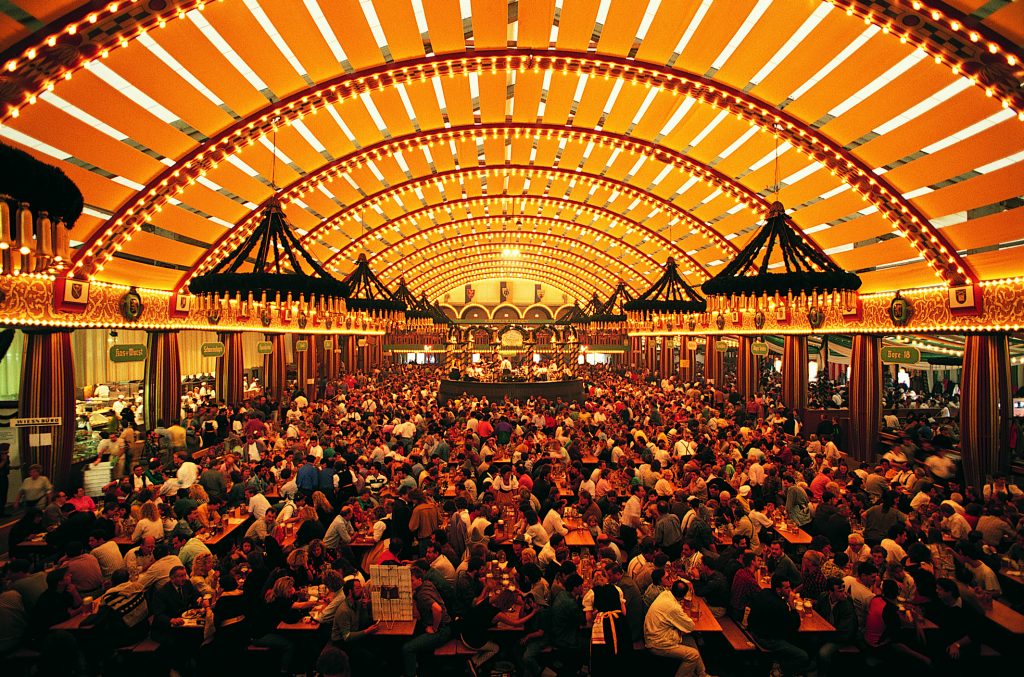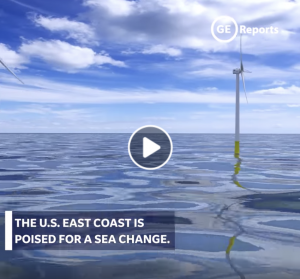
October 24, 2019

BREWED AWAKENING
The Bavarian town of Bamberg is home to nine breweries — and no shortage of brewing legends. For instance, there’s the story of Bamberg’s famous smoke beer, supposedly invented when smoke from a brewery fire blew through a pile of malt. Brewers were able to take that accident and spin smoke into liquid gold, but these days they’re using an even cooler technology: 3D printing. One of the town’s venerable brewing equipment makers, Kaspar Schulz, has joined forces with GE to bring the power of advanced manufacturing to beer brewing. The introduction of a sleek new 3D-printed part allows brewers to cut hours of time off an early stage in the process, ultimately boosting their yield. To put it plainly: less time, more beer.
Technology on tap: The 3D-printed part comes in handy in the lautering and sparging process — which takes place before fermentation, when beer makers separate spent grain from wort, the sugary-protein rich water that later ferments into beer, in vast stainless-steel vessels called lauter tuns. Kaspar Schulz was already wondering if there was a way to hasten the process by improving the blades that churn up the grain at the bottom of the tun. GE’s Munich team thought they could go even better, designing a new 3D-printed blade that can “dynamically loosen” the spent grain — sort of like swirling tea leaves in a cup for better steeping. It was a true meeting of the minds. Kaspar Schulz was able to tap into three centuries of experience as an equipment manufacturer, while the GE team was inspired by a different field altogether: Their blade design leaned on knowledge and expertise from the aerospace industry.
Learn more here about how German beer is brewed — and how 3D printing can help.
PASSPORT TO SUCCESS
When Bill Lear introduced the first business planes in the 1960s, flying economy on a commercial jet was still a special occasion for most travelers. But with the Learjet 23, powered by a pair of GE engines, the storied plane maker sensed another market, one that could provide speed and convenience to busy executives, for instance. And to the rich and famous: One of the first buyers, Frank Sinatra, used his plane to shuttle his Rat Pack friends between Los Angeles and Las Vegas. Learjet is now part of Bombardier, which itself was in Las Vegas this week for the annual NBAA Business Aviation Convention & Exhibition. Visitors there talked up the company’s industry-leading Global 7500, a next-gen business jet listed at a cool $72.8 million. Like its Learjet forerunner, the Global 7500’s pair of engines rely on the power of GE innovation.
It was a very good year: Called the Passport engine, the GE machine is “the most sophisticated engine ever created for business jets,” according to Bombardier’s Jean-Christophe Gallagher — it’s GE’s largest engine for business jets. It uses technologies from commercial jet engines, 3D printing, as well as the latest wonder materials like ceramic matrix composites for improved fuel efficiency and lower noise and emissions. Though it’s been in service less than a year, the Passport-powered Global 7500 has already set a number of records, including a 8,225-nautical-mile flight from Sydney, Australia, to Detroit on a single tank of fuel. This week in Vegas, then, GE and Bombardier are continuing a long-term partnership worth toasting.
Learn more here about the advanced Passport engine taking the business aviation industry to new heights.
RENEWABLE ENERGY POWERS ON
The renewables juggernaut shows no signs of slowing. The latest indication? A report out this week from the International Energy Agency. “Renewables 2019,” a market analysis and five-year forecast, takes a particular look at the global solar photovoltaic market, which it characterizes as set for “spectacular growth” as solar panels find homes on more — well — homes, and on businesses and factories. That’s part of a larger renewables picture that also includes sources like hydropower and wind. Global offshore wind capacity, for instance, could triple by 2024, driven by activity in the U.S., China and the European Union — where GE has just signed on to provide its powerful Haliade-X turbine platform to the world’s largest offshore wind project.
Power move: The IEA projects that the world’s total renewable-based capacity will grow by 50% by 2024. That’s an increase of 1,200 gigawatts — equivalent to the U.S.’s total current power capacity. With all that, though, the market should be growing faster still, said executive director Fatih Birol: “Renewables are already the world's second largest source of electricity, but their deployment still needs to accelerate if we are to achieve long-term climate, air quality and energy access goals.” One technology that will come in handy as the world transitions to clean energy is GE’s class of highly efficient HA turbines — which can deftly pick up the slack when wind and solar generation wanes. The IEA reported in June that “demand for natural gas grew 4.6% in 2018, its fastest annual pace since 2010,” and that it is “expected to rise by more than 10% over the next five years, reaching more than 4.3 trillion cubic meters…in 2024.” Power generation will remain an important market.
Click here for the top-line findings of the IEA’s report, and here for the full paper.
— VIDEO OF THE WEEK —

Ørsted U.S. is building two offshore wind farms in American waters using GE Renewable Energy’s Haliade-X 12 MW, the world’s most powerful wind turbine.
— QUOTE OF THE DAY —
“Brewers can double the amount of brews in one day. This was just not possible with normal parts.”
— Jörg Binkert, head of research and development at Kaspar Schulz
Quote: GE Reports. Image: Getty Images.
ENJOY THIS NEWSLETTER?
Please send it to your friends and let them know they can subscribe here.




